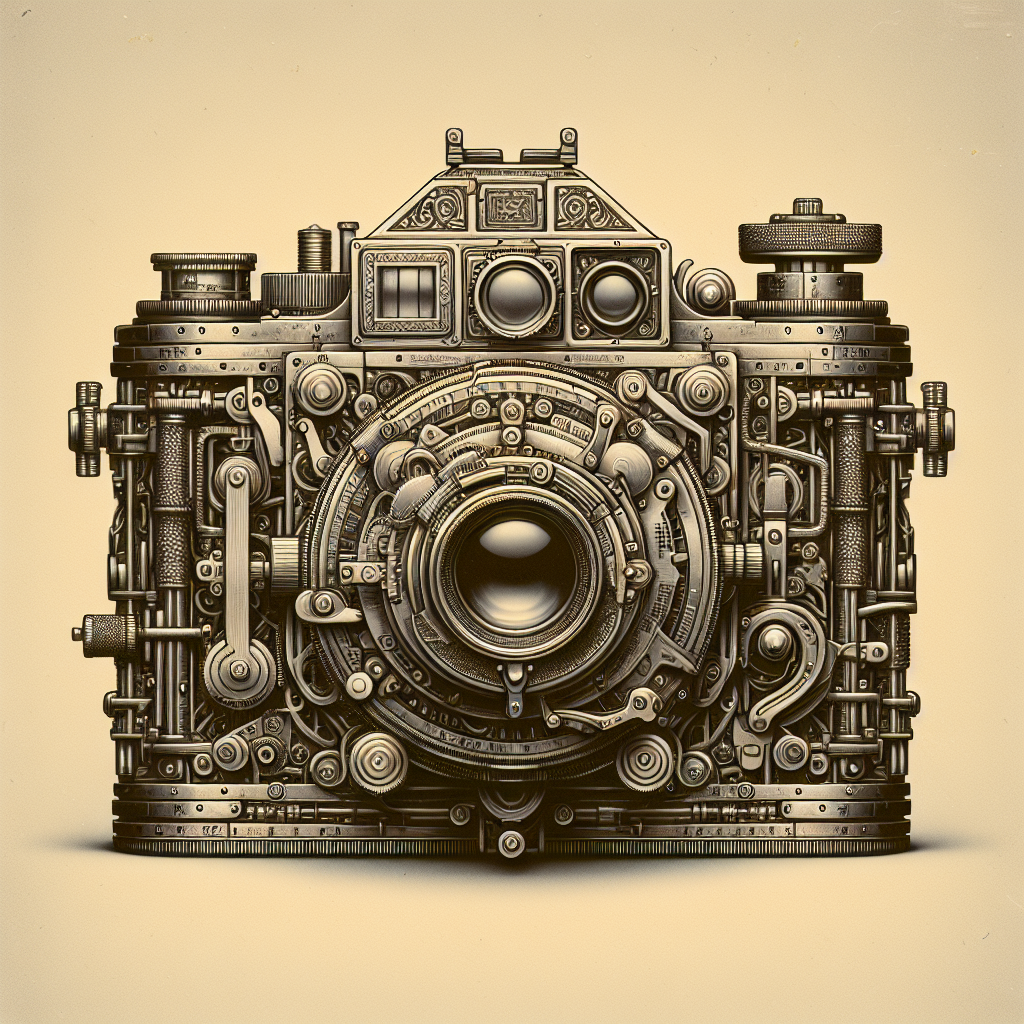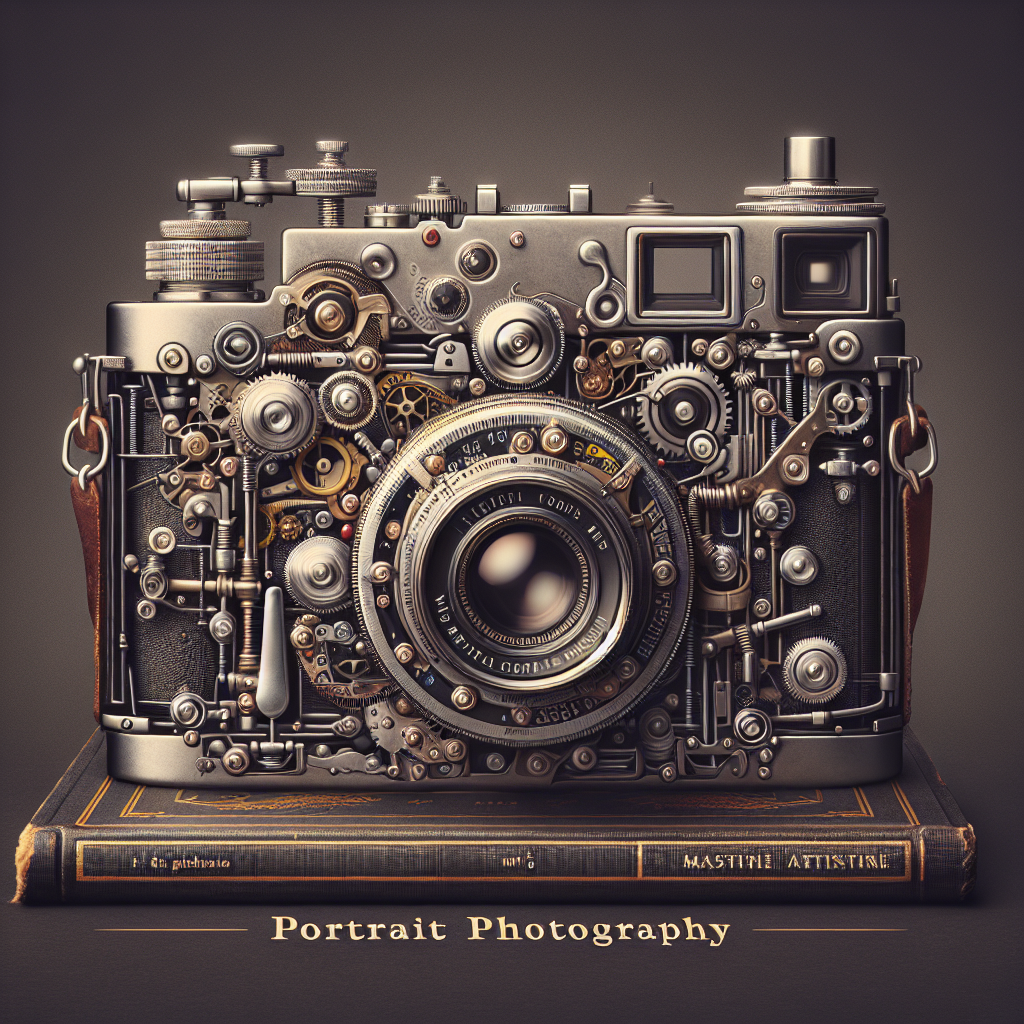Are you ready to embark on a creative journey and capture the world around you in unique and expressive ways? Look no further, because in this article, we will guide you on mastering the art of portrait photography. Whether you’re a complete beginner or want to refine your skills, we have all the tips and techniques you need to take stunning portraits. Get ready to bring out the best in your subjects and create images that truly reflect their personality and essence. Let’s dive into the wonderful world of portrait photography!
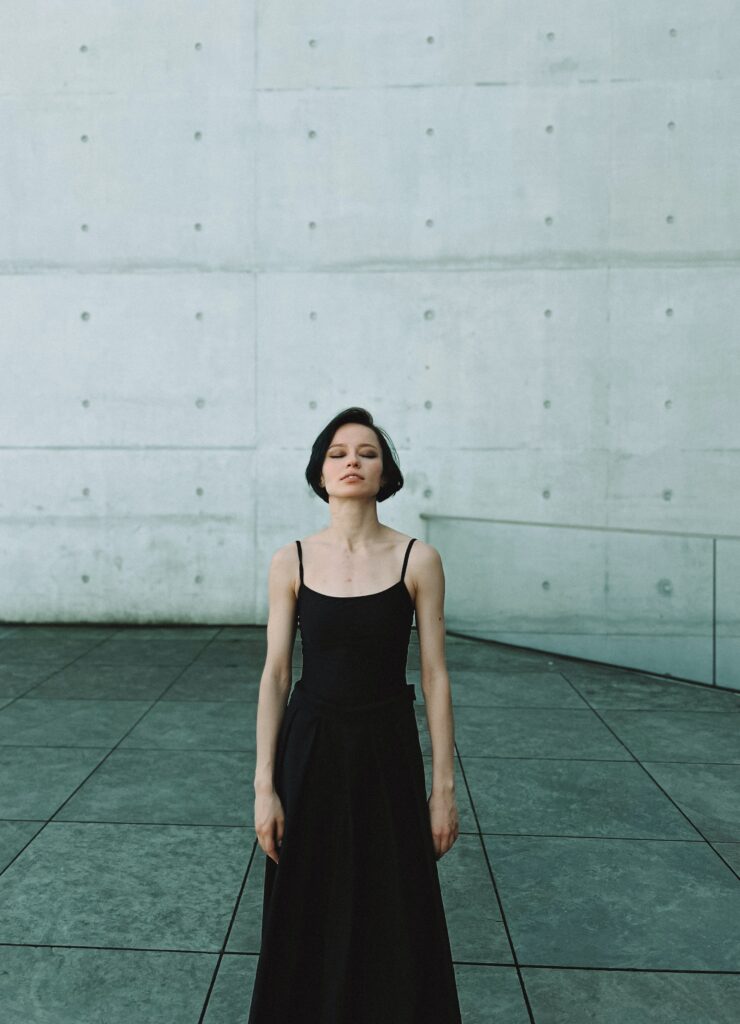
This image is property of images.pexels.com.
Understanding Portrait Photography
Defining Portrait Photography
Portrait photography is a genre of photography that focuses on capturing the personality, mood, and essence of a person or group of people. It involves using various techniques, compositions, and lighting to create visually appealing images that celebrate the individuality of the subject(s). Unlike other forms of photography that may aim to capture landscapes or events, portrait photography centers around the human subject(s) and aims to tell their story through the lens.
The Importance of Portraits
Portraits are invaluable because they freeze moments in time, allowing us to capture and preserve memories of ourselves and our loved ones. They serve as a visual representation of a person’s journey, personality, and emotions. Portraits can evoke powerful emotions, capture the essence of a person’s character, and create a lasting connection between the subject and the viewer. They are not only treasured by individuals and families but also play a significant role in various fields such as editorial, fashion, and advertising.
Different Types of Portraits
There are various types of portraits, each with its own unique purpose and approach. Environmental portraits place the subject in their natural environment, providing context and insight into their lifestyle or profession. Candid portraits capture spontaneous moments and genuine expressions, often in unposed and informal situations. Studio portraits are carefully crafted using controlled lighting and backgrounds to create a more controlled and stylized image. Group portraits capture the dynamics and relationships between multiple individuals. Each type of portrait offers a different narrative and allows the photographer to experiment with different techniques and styles.
Essential Equipment for Portrait Photography
Camera and Lens
To capture high-quality portraits, a camera with manual controls and interchangeable lenses is essential. A DSLR or mirrorless camera allows you to have full control over exposure, focus, and other settings, giving you the flexibility to achieve the desired look. When it comes to lenses, a good portrait lens with a focal length between 50mm and 85mm is commonly preferred. These lenses offer a flattering perspective and minimal distortion, allowing you to capture subjects with natural-looking proportions.
Lighting Equipment
Proper lighting is essential for creating stunning portraits. While natural light can be utilized effectively, having control over artificial lighting can significantly enhance your ability to shape and manipulate the lighting to suit your creative vision. A basic lighting setup for portrait photography typically includes two or three light sources, such as softboxes or strobes, and modifiers like umbrellas or diffusers to control the light’s direction and intensity.
Tripod and Other Accessories
A tripod is a valuable tool for portrait photographers as it provides stability and allows for precise composition. It is especially useful when shooting in low-light conditions or when using longer shutter speeds. Additionally, having extra memory cards and batteries is crucial to ensure you can capture your subjects without any interruptions. Other accessories that can be beneficial include remote shutter releases, reflectors, and light meters.
Mastering Composition Techniques
Rule of Thirds
The rule of thirds is a fundamental compositional guideline that can greatly improve the overall balance and interest of your portraits. By dividing the frame into nine equal parts using two horizontal and two vertical lines, the rule of thirds suggests placing key elements such as the eyes, the subject’s face, or other significant points of interest along these lines or at their intersections. This technique creates a visually pleasing composition that draws the viewer’s attention to the subject while adding depth and balance to the image.
Leading Lines
Including leading lines in your composition can guide the viewer’s eye towards the subject or create a sense of movement within the frame. Leading lines can be found in various elements such as roads, pathways, fences, or even natural lines created by a subject’s body posture or clothing. By strategically positioning these lines in your frame, you can add visual interest and help create a more engaging and dynamic portrait.
Symmetry and Balance
Symmetry and balance play an important role in creating visually appealing portraits. Symmetrical compositions have a sense of order and harmony, often achieved by placing the subject in the center of the frame. On the other hand, asymmetrical compositions create a more dynamic and visually interesting image by placing elements off-center while still maintaining balance. Experiment with both symmetrical and asymmetrical compositions to find what works best for each subject and their surroundings.
Background and Foreground Elements
The background and foreground elements in a portrait can contribute to the storytelling and overall impact of the image. Pay attention to the environment in which the subject is placed, ensuring that it complements and enhances the story you want to convey. Avoid distracting elements that may draw attention away from the subject, but also look for opportunities to incorporate elements that can add depth, texture, or context to your composition.
Working with Natural Light
Understanding Golden Hour
The golden hour, also known as the magic hour, refers to the period shortly after sunrise or before sunset when the quality of natural light is soft, warm, and diffused. During this time, the low angle of the sun creates long shadows and a beautiful, flattering glow that can enhance your portraits. Shooting during the golden hour allows you to capture stunning outdoor portraits with a soft, romantic atmosphere and a pleasing color palette.
Utilizing Window Light
Window light is a fantastic source of soft, diffused light that can be ideal for creating intimate and flattering portraits. Position your subject near a large window and take advantage of the indirect light that streams through. You can further shape the light by using curtains or blinds to control the intensity and direction. Experiment with different angles and positions to find the most flattering lighting setup for your subject.
Controlling Shadows and Highlights
Understanding how to control shadows and highlights is crucial in portrait photography to ensure a well-exposed and balanced image. When working with natural light, you can use reflectors or bounce cards to fill in shadows and soften harsh shadows. Additionally, you can position your subject in areas with even lighting to minimize harsh shadows. Paying attention to how light interacts with your subject’s face and body can create a more appealing and harmonious portrait.
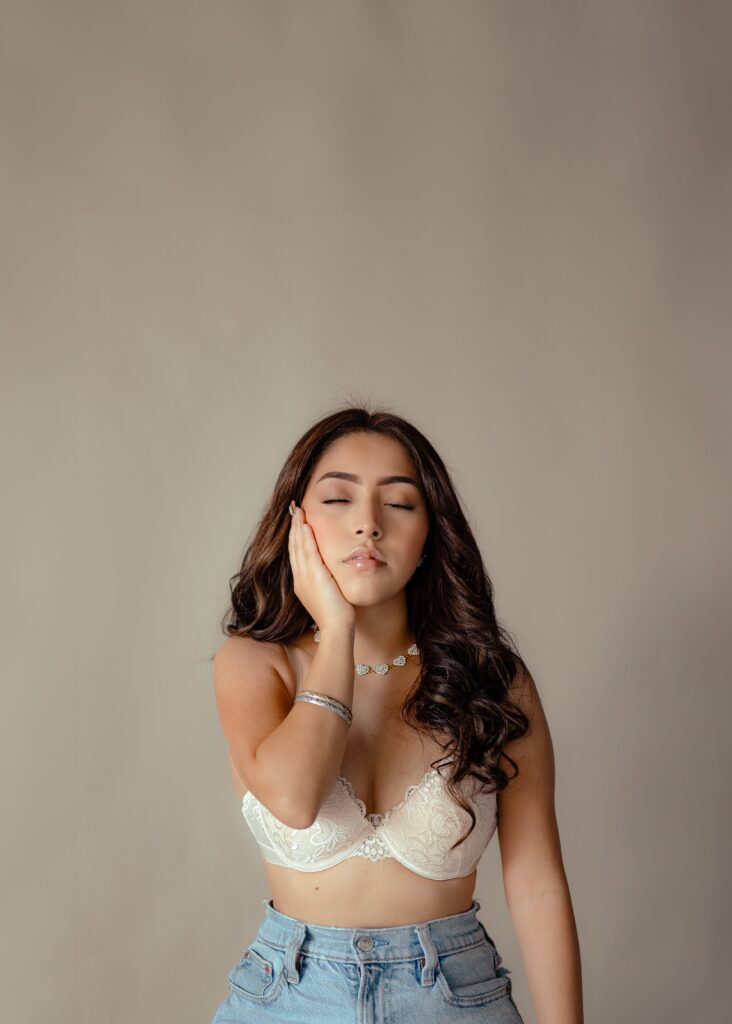
This image is property of images.pexels.com.
Using Artificial Lighting
Types of Artificial Lighting
Artificial lighting allows for precise control over the lighting conditions in your portraits. There are various types of artificial lighting that can be used, including strobes, continuous lights, speedlights, and LED panels. Strobes provide a powerful burst of light and are commonly used in studio setups. Continuous lights are ideal for beginners as they provide constant illumination, making it easier to preview the lighting setup and make adjustments in real-time. Speedlights are portable, compact flash units that can be used both on-camera and off-camera. LED panels offer a versatile, energy-efficient lighting solution that can be used in various environments.
Placement and Angles
When working with artificial lighting, the placement and angles of the light sources can dramatically affect the mood and look of your portraits. The key light, which is the primary light source, is usually positioned to the side of the subject, slightly above eye level. This creates a three-dimensional look by casting shadows and adding depth to the subject’s face. The fill light is used to soften shadows created by the key light and provides overall illumination. Other lights, such as hair lights or background lights, can be used to further separate the subject from the background and add depth to the image.
Modifiers and Diffusers
Modifiers and diffusers are essential tools for shaping and controlling the artificial light in your portraits. Softboxes are commonly used to create soft and diffused light, reducing harsh shadows and creating a pleasing, even illumination. Umbrellas can be used to bounce and spread light, providing a broader light source. Reflectors can be used to bounce light back onto the subject, filling in shadows and adding highlights. Gels can be used to modify the color of artificial light, allowing for creative and dramatic effects. Experimenting with different modifiers and diffusers can help you achieve the desired mood and style for your portraits.
Posing and Directing Tips
Guiding Your Subject
As a portrait photographer, you have the responsibility of guiding your subject to achieve the desired mood, expression, and pose. Communication is key in establishing a comfortable and trustworthy relationship with your subject. Clearly communicate your vision and give clear directions on where to look, how to position their body, and how to express their emotions. Be patient and provide feedback and encouragement throughout the session to help your subject feel at ease and confident.
Creating a Comfortable Environment
Creating a comfortable environment for your subject is crucial to capturing natural and genuine expressions. Build rapport by engaging in friendly conversation and establishing a connection. Encourage your subject to relax, and allow them to be themselves. Provide a relaxed and positive atmosphere that conveys your appreciation and understanding. By creating a comfortable environment, you will be able to capture more authentic and intimate portraits.
Natural and Candid Expressions
One of the keys to capturing compelling portraits is to encourage natural and candid expressions from your subject. Instead of forcing a smile or a pose, try to evoke genuine emotions and reactions. Engage in conversation, tell jokes, or ask your subject to recall happy or meaningful memories. Encourage them to express their personality and let their emotions shine through. By capturing these real and unguarded moments, you can create portraits that are not only visually stunning but also deeply meaningful.
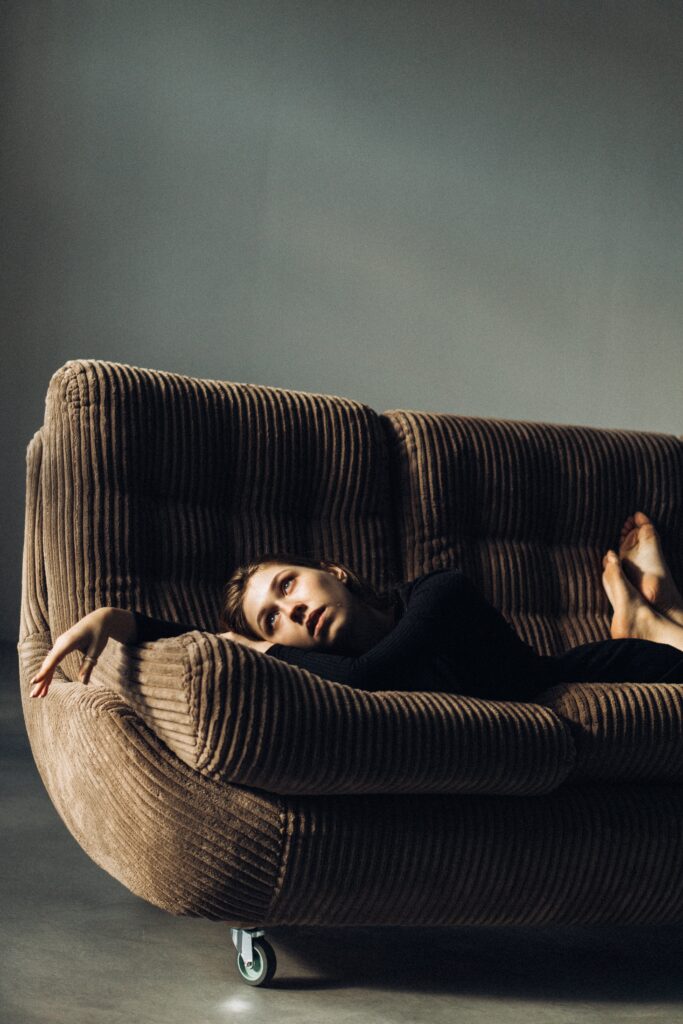
This image is property of images.pexels.com.
Understanding Facial Expressions
Reading Emotions
Being able to read and understand a subject’s emotions is crucial in portrait photography. Mastering this skill allows you to capture authentic and expressive portraits that truly reflect the subject’s inner self. Pay attention to subtle facial cues such as the curve of the lips, the glint in the eyes, or the lines on the forehead. These cues can convey a range of emotions, from happiness and joy to sadness or contemplation. Observing and understanding these emotions will help you direct your subject and capture the desired mood in your portraits.
Directing Facial Expressions
As a portrait photographer, you have the ability to direct your subject’s facial expressions to further convey the desired emotions or tell a specific story. Communicate the emotion or concept you want to portray and guide your subject through prompts, stories, or visual references. Use music or props to create a specific atmosphere or encourage certain expressions. Make sure to provide specific direction on facial cues such as smiling, raising an eyebrow, or looking off into the distance. Experiment with different techniques and see how facial expressions can transform the narrative of your portraits.
Capturing Authenticity
Authenticity is a key element in creating powerful and relatable portraits. Instead of trying to make your subject fit into a specific mold or style, strive to capture their true essence and personality. Allow them to express themselves naturally and embrace their unique quirks and features. Encourage vulnerability and openness, creating a safe space for your subject to let their guard down. By focusing on authenticity, you can create portraits that resonate with the subject and the viewer, capturing the true beauty and humanity in each individual.
Working with Props and Wardrobe
Choosing Appropriate Props
Props can be a valuable addition to your portraits, adding visual interest and enhancing the narrative. When choosing props, consider their significance in relation to your subject and the story you want to tell. They should complement and enhance the overall composition, without overpowering or distracting from the subject. Props can range from simple objects like flowers or hats to more elaborate items that reflect the subject’s hobbies, profession, or personal interests. Use props thoughtfully and creatively to create portraits that are visually engaging and tell a story.
Styling and Coordinating Wardrobe
The attire worn by your subject can greatly influence the mood and style of your portraits. Encourage your subject to select clothing that reflects their personality and makes them feel confident. Coordinate the colors and styles to ensure they harmonize with the background and props, creating a cohesive and visually pleasing composition. Consider the overall theme or concept of your portrait and guide your subject in selecting wardrobe items that align with that vision. A well-chosen wardrobe can enhance the narrative and create stunning portraits that truly capture the subject’s essence.
Enhancing the Narrative
Props and wardrobe choices can play a significant role in enhancing the narrative of your portraits. They can help tell a story, create a specific mood, or convey a particular message. Consider the narrative you want to convey and select props and wardrobe items that align with it. For example, if you are photographing a musician, incorporating musical instruments or sheet music can add depth and meaning to the portrait. Use props and wardrobe creatively to add layers of storytelling and create portraits that are visually intriguing and emotionally compelling.
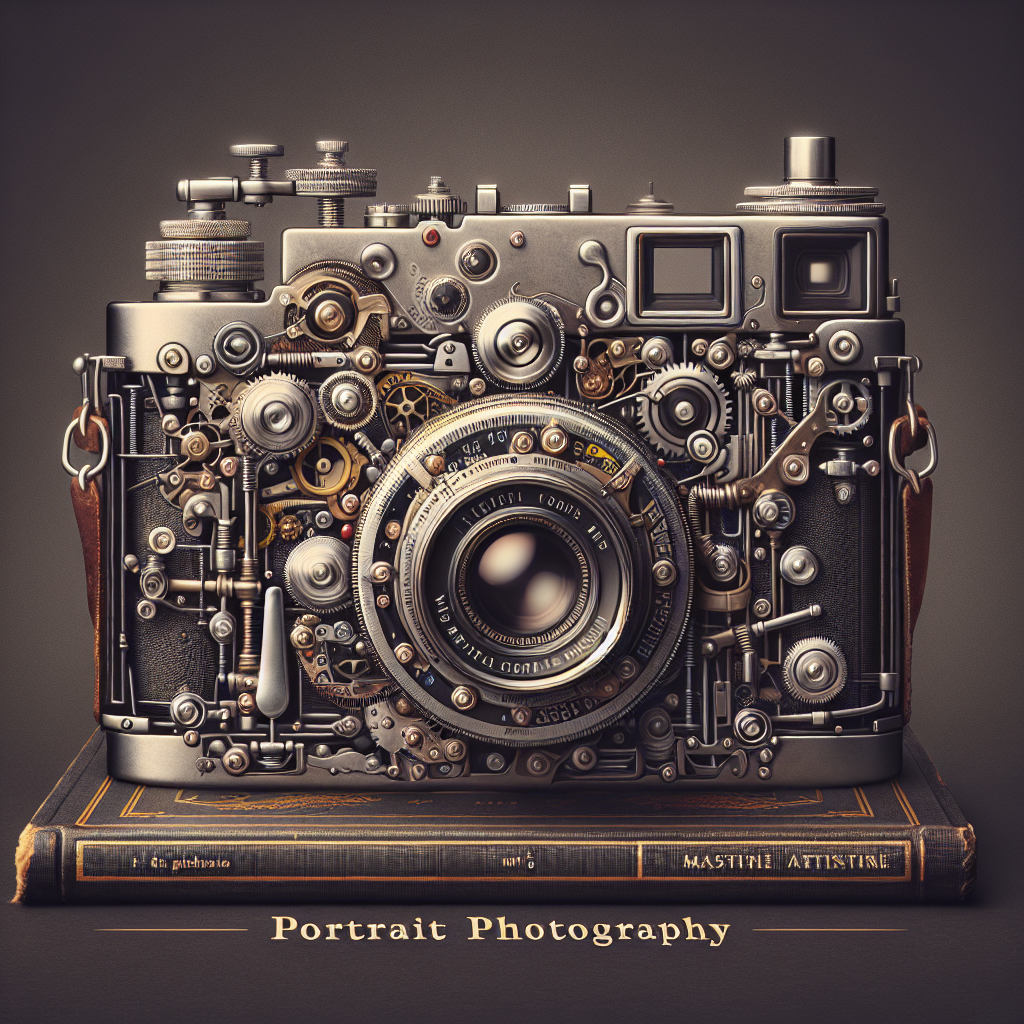
Editing and Retouching Techniques
Basic Editing Tools
Editing is an integral part of the portrait photography process and can greatly impact the final result of your images. Basic editing tools such as exposure adjustment, white balance correction, and cropping can help refine the overall look and feel of your portraits. Use editing software like Adobe Lightroom or Capture One to make these adjustments and ensure that your images are properly exposed, colors are accurate, and the composition is visually engaging.
Color Correction and Enhancement
Color plays a crucial role in setting the mood and tone of your portraits. Use editing software to fine-tune the color balance, saturation, and contrast to achieve the desired look for your images. Adjusting the temperature and tint can create a warm or cool atmosphere, while manipulating the saturation and contrast can add depth and visual impact. Experiment with different color grading techniques and develop your unique editing style to make your portraits truly stand out.
Skin Retouching
Retouching the skin in portrait photography is a common practice to enhance the subject’s appearance while maintaining a natural and realistic look. Techniques such as removing blemishes, reducing wrinkles or redness, and smoothing skin texture can help create a polished and flattering final image. However, it is important to exercise restraint and avoid excessive retouching that may result in an unnatural appearance. Aim to enhance the subject’s natural beauty while preserving their unique features and maintaining authenticity.
Building a Portrait Photography Portfolio
Selecting Your Best Work
When building a portfolio, it is essential to showcase your best work. Carefully select images that represent your style, technical skills, and artistic vision. Choose a variety of portraits that demonstrate your versatility and ability to capture different moods and subjects. Consider the overall cohesion and flow of the images, ensuring that they complement each other and create a visually appealing narrative. Regularly update your portfolio with new and improved work to showcase your growth as a portrait photographer.
Organizing and Presenting Your Portfolio
Organizing your portfolio is crucial to ensuring that it is easy to navigate and visually compelling. Consider the sequence of the images and how they flow from one to another. Group similar styles or subjects together to create visual cohesion and allow potential clients or viewers to easily understand your range of skills. Present your portfolio in a professional and user-friendly format, whether it is through an online website, physical prints, or a digital presentation. Pay attention to details such as image resolution and quality to ensure that your portfolio represents your work in the best possible light.
Marketing and Promoting Your Portfolio
Once you have created a compelling portfolio, it is important to actively market and promote your work to attract potential clients and opportunities. Use social media platforms such as Instagram, Facebook, or LinkedIn to showcase your portfolio and engage with your target audience. Collaborate with other creatives in the industry to expand your network and gain exposure. Consider participating in photography exhibitions or competitions and submitting your portfolio to relevant publications or websites. Building a strong online presence, creating a professional website, and utilizing various marketing strategies will help you establish yourself as a reputable portrait photographer and attract potential clients.
